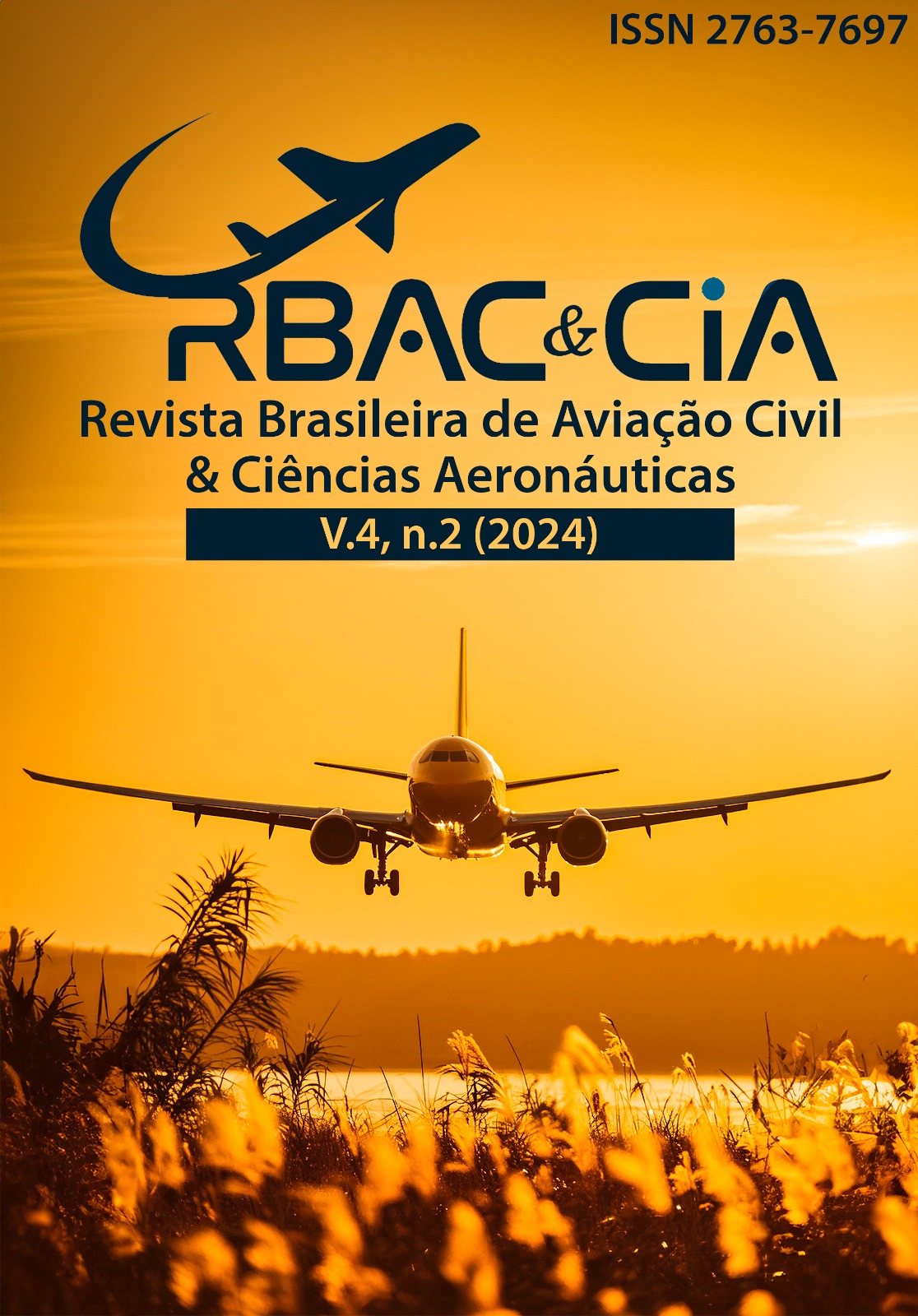IMPLEMENTAÇÃO E POTENCIAL DAS AERONAVES ELÉTRICAS COM DECOLAGEM E POUSO VERTICAL (eVTOL) NO BRASIL: PESPECTIVAS PARA A MOBILIDADE AÉREA URBANA IMPLEMENTATION AND POTENTIAL OF ELECTRIC AIRCRAFT WITH VERTICAL TAKE-OFF AND LANDING (eVTOL) IN BRAZIL: PERSPECTIVES FOR URBAN AIR MOBILITY
Conteúdo do artigo principal
Resumo
As aeronaves elétricas com decolagem e pouso vertical (eVTOL) surgem como uma intensificação inovadora da busca por transporte e soluções ambientalmente sustentáveis nas grandes cidades e fazem parte do conceito de Mobilidade Aérea Urbana (UAM). Este estudo tem como objetivo discutir o progresso da implementação do eVTOL no Brasil, dado o seu potencial para integração dessas aeronaves. Os métodos utilizados no estudo são de natureza básica, métodos qualitativos, procedimentos documentais e bibliográficos, constituídos por fontes científicas e instituições oficiais. Os resultados apontam para a possibilidade de companhias aéreas brasileiras incorporarem aeronaves eVTOL elétricas à sua malha, como Azul e Gol. Além disso, descobriu-se que a indústria nacional também desenvolve essas aeronaves, que tem como base uma subsidiária da Embraer, Eve Air Mobility. No entanto, o uso de eVTOLs depende, entre outros fatores, de infraestrutura adequada e de regulamentações atualizadas, questões que ainda estão em seus primórdios em todo o país. Por outro lado, os resultados indicam possíveis ações mitigadoras para superar esses desafios, destacando discussões entre entidades setoriais e acadêmicos da área a respeito de conceitos regulatórios para mobilidade aérea. Concluiu-se que o Brasil está bem posicionado no setor de Mobilidade Aérea Avançada (AAM), dadas as expectativas locais de desenvolvimento tecnológico e aquisições do setor privado no setor, bem como seu papel estratégico e parceria com o Brasil. O principal regulador do setor.
ABSTRACT
Electric aircraft with vertical take-off and landing (eVTOL) emerge as an innovative intensification of the search for transport and environmentally sustainable solutions in large cities and are part of the concept of Urban Air Mobility (UAM). This study aims to discuss the progress of implementing eVTOL in Brazil, given its potential for integrating these aircraft. The methods used in the study are of a basic nature, qualitative methods, documentary and bibliographic procedures, constituted by scientific sources and official institutions. The results point to the possibility of Brazilian airlines incorporating electric eVTOL aircraft into their network, such as Azul and Gol. Furthermore, it was discovered that the national industry also develops these aircraft, which is based on a subsidiary of Embraer, Eve Air Mobility. However, the use of eVTOLs depends, among other factors, on adequate infrastructure and updated regulations, issues that are still in their infancy across the country. On the other hand, the results indicate possible mitigating actions to overcome these challenges, highlighting discussions between sectoral entities and academics in the area regarding regulatory concepts for urban air mobility. It was concluded that Brazil is well positioned in the Advanced Air Mobility (AAM) sector, given local expectations for technological development and private sector acquisitions in the sector, as well as its strategic role and partnership with Brazil. The main regulator of the sector.
Downloads
Detalhes do artigo

Este trabalho está licenciado sob uma licença Creative Commons Attribution 4.0 International License.
